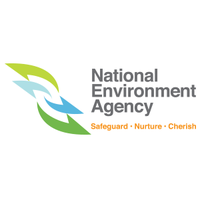Oil Spill Crisis: Changi and Pulau Ubin Under Siege
April 6, 2025, 10:28 pm

Location: Singapore
Employees: 201-500
Founded date: 2019
An oil leak from Johor’s Langsat Terminal has cast a dark shadow over Singapore’s coastal beauty. The spill, which occurred on April 4, 2025, has led to a swift response from local authorities. Beaches and wetlands, once vibrant with life, are now battlegrounds for clean-up crews.
The Chek Jawa Wetlands on Pulau Ubin reopened to the public on April 5, but not without caution. The National Parks Board (NParks) is on high alert, monitoring the sensitive biodiversity of the area. Booms, those floating barriers, have been strategically placed to contain the spill. They act like sentinels, guarding against further contamination.
The Singapore Food Agency (SFA) is also in the fray. Seafood from farms in the East Johor Strait is under scrutiny. Tests show no immediate danger, but the SFA remains vigilant. One farm, De Kelong, has taken a hit. Oil has seeped into its operations, forcing a halt on sales and distribution. The farm is now a part of the clean-up narrative, working tirelessly to restore its reputation.
The authorities have reported no visible impact on wildlife at Chek Jawa, Changi Beach Park, or Pasir Ris Park. Yet, the oil sheen paints a different picture. It’s a thin layer, but it’s there, a reminder of the disaster lurking beneath the surface. The Department of Environment in Malaysia has confirmed that about 1.6 cubic meters of oil spilled into the sea. That’s enough to raise alarms.
Changi Beach, a popular spot for locals and tourists alike, has been cordoned off. The public is advised against swimming or engaging in water activities. The beach, usually a canvas of sun and surf, is now a restricted zone. Long streaks of oil mar the shoreline, and the clean-up crew is hard at work. As of now, around 20 workers are deployed, manually scooping up oil-soaked sand. It’s a race against time.
At Pasir Ris Beach, the scene is similar. Oil has washed ashore, and a section of the beach is closed off. Coconut shells and plastic debris, once harmless, are now tainted. The beach, a playground for families, is silent. Students excited for a field trip to the intertidal zone were met with disappointment. Plans changed, but nature’s lesson remains.
The response from authorities has been swift. Preventive measures are in place at coastal drains and key locations. The Public Utilities Board (PUB) has deployed containment booms at Punggol and Serangoon reservoirs. These measures are crucial, but they are not foolproof. The situation is fluid, and assessments are ongoing.
As the clean-up continues, the impact on local businesses is a concern. Near the Pulau Ubin jetty, a bicycle shop reports steady foot traffic. However, taxi drivers are feeling the pinch. Cancellations are rolling in as visitors rethink their plans. The oil spill has disrupted not just the environment but the local economy.
The National Development Minister has assured the public that the situation is being monitored closely. The Mangrove Boardwalk at Chek Jawa has been affected, with oil residue observed on rocks and mangrove roots. The intertidal areas, however, remain largely untouched. It’s a small victory in a larger battle.
The Maritime and Port Authority of Singapore (MPA) is coordinating efforts with the Johor Port Authority. Communication is key in these situations. The MPA has confirmed that no other oil patches have been sighted at sea or ashore. Yet, the threat lingers. The authorities are prepared for significant developments.
As the sun sets on the horizon, the beaches of Changi and Pulau Ubin are left to recover. The oil spill is a stark reminder of the fragility of our environment. Nature is resilient, but it needs our help. The clean-up is not just about removing oil; it’s about restoring balance.
In the coming days, the public will be watching closely. Updates from the authorities will dictate the next steps. Will the beaches reopen? Will the wildlife return? The answers remain uncertain, but one thing is clear: vigilance is essential. The ocean is a delicate ecosystem, and we are its stewards.
As the clean-up crews work tirelessly, the community rallies. Volunteers may step forward, eager to lend a hand. Every effort counts. The fight against pollution is a collective one. Together, we can heal the wounds inflicted by this oil spill.
In the end, the story of the oil leak is not just about the disaster. It’s about resilience, recovery, and the relentless spirit of those who cherish our natural world. The beaches will heal, but it will take time. The journey is long, but hope is a powerful force. Let’s keep it alive.
The Chek Jawa Wetlands on Pulau Ubin reopened to the public on April 5, but not without caution. The National Parks Board (NParks) is on high alert, monitoring the sensitive biodiversity of the area. Booms, those floating barriers, have been strategically placed to contain the spill. They act like sentinels, guarding against further contamination.
The Singapore Food Agency (SFA) is also in the fray. Seafood from farms in the East Johor Strait is under scrutiny. Tests show no immediate danger, but the SFA remains vigilant. One farm, De Kelong, has taken a hit. Oil has seeped into its operations, forcing a halt on sales and distribution. The farm is now a part of the clean-up narrative, working tirelessly to restore its reputation.
The authorities have reported no visible impact on wildlife at Chek Jawa, Changi Beach Park, or Pasir Ris Park. Yet, the oil sheen paints a different picture. It’s a thin layer, but it’s there, a reminder of the disaster lurking beneath the surface. The Department of Environment in Malaysia has confirmed that about 1.6 cubic meters of oil spilled into the sea. That’s enough to raise alarms.
Changi Beach, a popular spot for locals and tourists alike, has been cordoned off. The public is advised against swimming or engaging in water activities. The beach, usually a canvas of sun and surf, is now a restricted zone. Long streaks of oil mar the shoreline, and the clean-up crew is hard at work. As of now, around 20 workers are deployed, manually scooping up oil-soaked sand. It’s a race against time.
At Pasir Ris Beach, the scene is similar. Oil has washed ashore, and a section of the beach is closed off. Coconut shells and plastic debris, once harmless, are now tainted. The beach, a playground for families, is silent. Students excited for a field trip to the intertidal zone were met with disappointment. Plans changed, but nature’s lesson remains.
The response from authorities has been swift. Preventive measures are in place at coastal drains and key locations. The Public Utilities Board (PUB) has deployed containment booms at Punggol and Serangoon reservoirs. These measures are crucial, but they are not foolproof. The situation is fluid, and assessments are ongoing.
As the clean-up continues, the impact on local businesses is a concern. Near the Pulau Ubin jetty, a bicycle shop reports steady foot traffic. However, taxi drivers are feeling the pinch. Cancellations are rolling in as visitors rethink their plans. The oil spill has disrupted not just the environment but the local economy.
The National Development Minister has assured the public that the situation is being monitored closely. The Mangrove Boardwalk at Chek Jawa has been affected, with oil residue observed on rocks and mangrove roots. The intertidal areas, however, remain largely untouched. It’s a small victory in a larger battle.
The Maritime and Port Authority of Singapore (MPA) is coordinating efforts with the Johor Port Authority. Communication is key in these situations. The MPA has confirmed that no other oil patches have been sighted at sea or ashore. Yet, the threat lingers. The authorities are prepared for significant developments.
As the sun sets on the horizon, the beaches of Changi and Pulau Ubin are left to recover. The oil spill is a stark reminder of the fragility of our environment. Nature is resilient, but it needs our help. The clean-up is not just about removing oil; it’s about restoring balance.
In the coming days, the public will be watching closely. Updates from the authorities will dictate the next steps. Will the beaches reopen? Will the wildlife return? The answers remain uncertain, but one thing is clear: vigilance is essential. The ocean is a delicate ecosystem, and we are its stewards.
As the clean-up crews work tirelessly, the community rallies. Volunteers may step forward, eager to lend a hand. Every effort counts. The fight against pollution is a collective one. Together, we can heal the wounds inflicted by this oil spill.
In the end, the story of the oil leak is not just about the disaster. It’s about resilience, recovery, and the relentless spirit of those who cherish our natural world. The beaches will heal, but it will take time. The journey is long, but hope is a powerful force. Let’s keep it alive.
